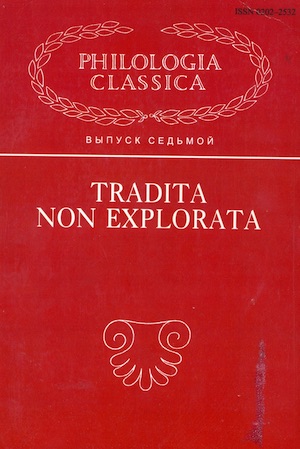О ложных снах, слоновой кости и глаголе ἐλεφαίρομαι (Od. XIX, 560–569)
Аннотация
In this paper the author tries to find a source of enigmatic passage in Odyssea (Od. XIX, 560–569) where Penelope gives the first in the ancient Greek literature allegoric interpretation of her dream: she explains the dreams coming out of the ivory gate as false, while the ones coming out of the horn gate as true. This passage of Odyssea in its own turn became a source for a lot of literature reminiscences, some of which also were interpretations: Plat., Charm. 173 a; Luc., Ver. hist. II, 32–33; Virg., Aen. VI, 893–898 etc. Besides there are four explanations in Scholia: synecdoche, paranomasia, physical and mythological ones. In the 20th century old theories were opposed by archaeological and structuralist ones, which nevertheless did not make right decision.
Author comes to the following conclusions. The motives of horn and ivory have nothing to do with gates and dreams, with ideas of lie and truth both in Greek mythology and in the mythology and folk-literature of other nations. Homer’s image of the gates of dreams seems to arise from the tradition proceeding to him, but the association of ivory and horn gates with the false and true dreams respectively doesn’t follow any tradition and seems to belong to Homer himself. Poet creates a striking enigmatic image using the word play of folk etymologies, which he likes: an epic word ἐλεφαίρονται calls ἐλέφας, then in turn κέρας as a usual antithesis to ἐλέφας calls κραίνειν and ἀκράαντα.
Скачивания
Загрузки
Опубликован
Как цитировать
Выпуск
Раздел
Лицензия
Статьи журнала «Philologia Classica» находятся в открытом доступе и распространяются в соответствии с условиями Лицензионного Договора с Санкт-Петербургским государственным университетом, который бесплатно предоставляет авторам неограниченное распространение и самостоятельное архивирование.






